Trump Nukes Environmental, Health, Endangered Wildlife Protections on His Way out the Door

(EnviroNews DC News Bureau/EnviroNews Nature) — While the door on Trump’s official authority may be closing quickly, his administration is still working feverishly to entrench his “anti-nature,” pro-business development agenda throughout the U.S. Government. Opponents say Trump has done everything he can to leave behind a legacy that undermines the Biden Administration — especially on policies pertaining to the environment. A late-term barrage of slashes, rule changes and rollbacks includes Environmental Protection Agency (EPA) cuts, denying Endangered Species Act (ESA) protections for creatures the Administration itself says need them, and more narrowly defining wildlife “habitat,” to exclude degraded areas that could otherwise be restored — to name a few.
“Trump is the most anti-nature president in U.S. history, so it comes as no surprise that his administration is doubling down by selling off anything and everything before they leave office,” Jenny Rowland-Shea, Senior Policy Analyst for Public Lands at the Center for American Progress, a liberal think tank, told the Washington Post. “What we’re seeing right now is a last-ditch, desperate effort by the Trump Administration to rubber-stamp as many permits, sign as many contracts and cut as many protected areas as it can to make a mess for the incoming Biden Administration.”
Environmental, Public Health and Climate Rollbacks
Greenhouse Gas Emissions
On Jan. 12, 2021, the EPA finalized a rule to limit greenhouse standards under the Clean Air Act. According to the agency, the new standard provides a framework for deciding “whether greenhouse gas (GHG) emissions from a source category are significant and should be regulated.”
The new policy states that more than three percent of total gross U.S. GHG emissions is the threshold for pollutant-specific significance. Even if a source point meets that first criteria, there are further criteria that may eliminate the possibility of regulation. The EPA states that the oil and gas industry account for just under three percent of the country’s GHG emissions and is, therefore, “necessarily insignificant.”
More Lead and Copper in Your Drinking Water
On Jan. 14, the EPA announced the final rule for lead and copper in drinking water. Among its provisions, it “requires, for the first time, community water systems to conduct lead-in-drinking-water testing and public education in schools and child care facilities. The EPA places the blame for lead systems and consumption, in part, on homeowners and consumers. “In most communities, a portion of the [Lead Service Line] is owned by the water system and the remaining portion is the property of the homeowner. Water systems must also engage with consumers to encourage actions such as flushing of taps before use to reduce their exposure to lead in drinking water, where necessary.”
While the EPA touts this rule as loop-hole closing, critics say it doesn’t do enough to protect children from the toxic effects of lead. Erik Olson, Senior Strategic Director for Health at the Natural Resources Defense Council (NRDC), told MLive the benefits this rule provides by closing loopholes are mitigated by the lacking requirement to replace all lead lines. Instead, water systems get a “two-decade-long extension of time to replace the lead service lines from about 14 years to over 33 years.” He continued:
So, yes, the old rule was terrible, but EPA has missed the opportunity three decades later to fundamentally fix the rule and to protect millions of kids from lead. It’s a huge disappointment. To protect against the scourge of lead poisoning we must remove the six to 10 million lead pipes buried in communities across the country. EPA’s new rule will leave those pipes in use for decades — and in many cases forever. We can, and must, do better.
The rule goes into effect March 16, 2021.
ANWR Open for Development
The legendary coastal plain of the Arctic National Wildlife Refuge (ANWR) was opened for oil and gas development when the Bureau of Land Management (BLM) held an auction for the drilling rights to 22 plots in area 1002 on the same day that Trump’s insurrectionists invaded the Capitol building, killing a police officer and injuring several others in the process. On Jan. 6, 2021, three organizations bid on 11 plots in the environmentally sensitive area. The biggest winner was the State of Alaska, which won nine sections for development at the cost of over $12 million. The other two enterprises won a single plot each for a total of about $2 million. The State of Alaska will receive half of the funds raised.
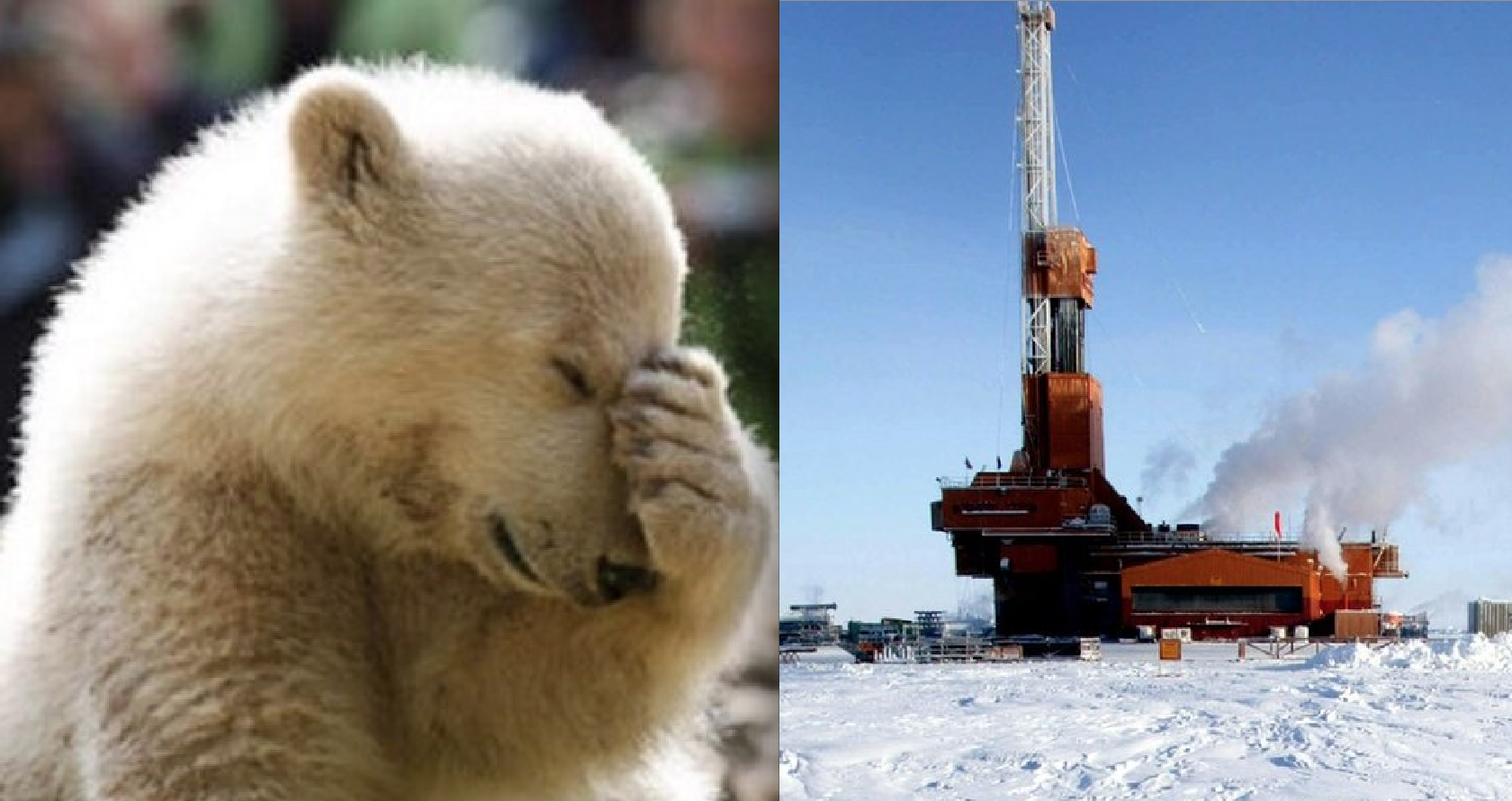
While many conservationists are calling the auction a flop, Alan Weitzner, Executive Director of the state-owned Alaska Industrial Development and Export Authority (AIDEA), a development bank, according to the Alaska Journal of Commerce, had other ideas. “By acquiring these tracts, Alaska preserves the right to responsibly develop its natural resources. This will create new, good-paying jobs on the North Slope and generate revenue for the local economies of Alaska’s Arctic and the state’s general fund.” The state could effectively sublease these plots for development.
“This plan will not only harm caribou, polar bears, and other wildlife, it is foolish in the face of rapidly advancing climate change,” said Center for Western Priorities Executive Director Jennifer Rokala in a press release.
Grazing Permits Granted for Insurrectionists
As reported by EnviroNews, on Dec. 31, 2020, the BLM proposed granting grazing permits to two convicted arsonists, whose arrests incited a violent standoff at the Malheur National Wildlife Refuge in Oregon. Just hours before the end of the President’s term, outgoing Secretary of the Interior David Bernhardt “used his last moments of authority” to finalize the permits, according to Paul Ruprecht of the Western Watersheds Project (WWP).
Steven and Dwight Hammond were convicted of arson in 2012 for their part in burning 140 acres of public lands after illegally killing a herd of deer. Steven Hammond was also convicted of arson for a fire he set in 2006. They were sentenced to serve the minimum mandatory prison time: five years. But after serving only three years of that term, the scofflaw duo was pardoned by President Trump and set free. In 2019, Secretary Ryan Zinke attempted to grant them grazing rights, but was rebuffed by the courts. But that didn’t stop the Interior Department from ramrodding it through in the eleventh hour.

“It is outrageous – although sadly predictable – that the Trump Administration has reached down into the Burns Field Office of the Bureau of Land Management and seized control to make sure they could give the Hammonds preferential access to public lands,” Ruprecht continued in a press release. “It’s clear that the BLM was told by on-high to get this done before the Trump Administration leaves tomorrow. It’s corruption, down to the fact that they raced through the weekend to get this rubber-stamped before the inauguration.”
Trump’s War on Wildlife Part II
Trump’s “war on wildlife” didn’t end with EnviroNews’ last in-depth expose’. As the end of his term has drawn closer, and his followers have attempted a coup, democracy isn’t the only thing Trump and his allies are trying to destroy. Even as Trump faced increasing pressure to step down, his illegitimately placed cronies, atop two Executive Branch organizations, have continued to follow through on implementing policies that are damaging for the environment and good for the gas, oil, mining, and agriculture industries.
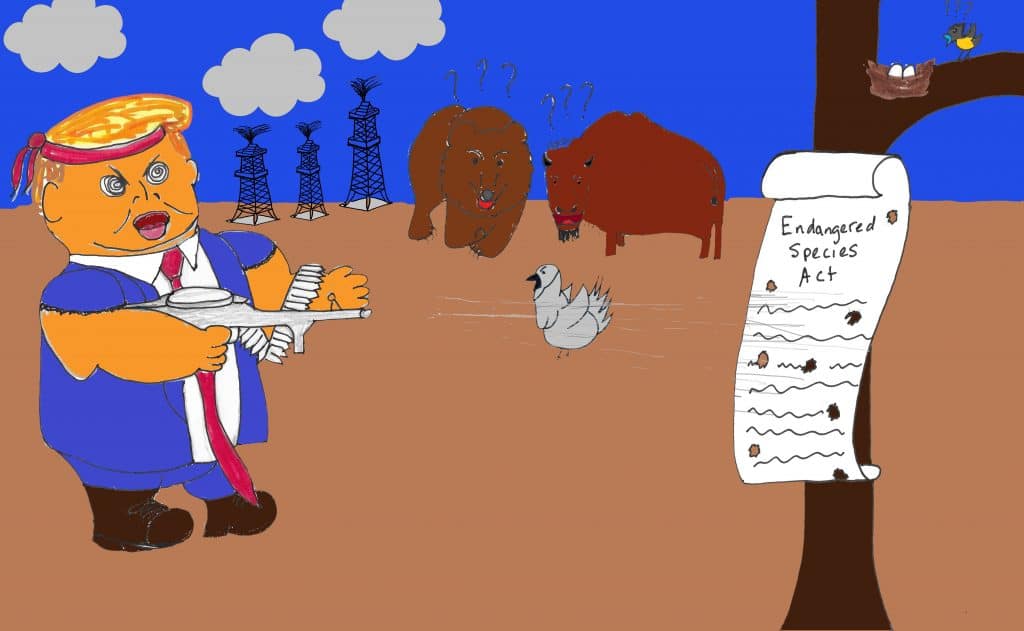
The illegally serving “acting” head of the Bureau of Land Management (BLM), William Perry Pendley — who continues to defy judicial orders to vacate the responsibilities of director, and the acting director of the National Parks Service (NPS) Margaret Everson — who was never confirmed by Congress, are two of the problems, according to conservationists and legal scholars. Because they never went through the required process to attain their positions, environmentalists and the courts are questioning the validity of policies enacted during their tenures.
Another New Slash to the Endangered Species Act
After Trump supporters attacked the Senate and the House of Representatives, the Trump Administration continued its war on wildlife by issuing new rules to further weaken the ESA. On Jan. 11, 2021, just five days after Trump supporters stormed the Capitol building in an effort to stop the count of Electoral College votes and the certification of Joe Biden’s election, the U.S. Fish and Wildlife Service (USFWS) and the National Marine Fisheries Service (NMFS) proposed “to amend the Services’ consultation regulations under the Endangered Species Act of 1973, as amended, pertaining to the U.S. Forest Service (USFS) and Bureau of Land Management.” The new rule would not require the reinitiating of consultation “for these agencies’ previously approved land management plans when new information reveals that effects of a plan may affect listed species or critical habitat in a manner or to an extent not previously considered, provided that any authorized actions for which the new information is relevant will be addressed through a separate action-specific consultation.” Opponents of the rule say it would allow the USFWS and BLM to ignore new science.
“As the last act of the most anti-wildlife administration in history, Trump is telling agencies to stick their heads in the sand and ignore science about the threats to endangered species,” said Stephanie Kurose, Senior Policy Specialist at the Center for Biological Diversity (the Center). “It’s disgraceful that this administration continues to wage its destructive war on wildlife.”
Sage Grouse Plans of 2019
On Jan. 11, the BLM flouted the judicial ruling that found the agency’s 2019 land-use plans to protect the greater sage grouse (Centrocercus urophasianus) were flawed. The agency resubmitted them with no changes.
“In the guise of collaborating with states, the Trump plans unjustifiably gutted sage grouse protections, gave away public-land resources to big oil and big ag, and ignored the long-term consequences,” said Erik Molvar, Executive Director of Western Watersheds Project, in a press release. “State plans advocate protection levels much too weak to sustain sage grouse populations, let alone recover them to healthy levels, which is why a federal backstop became essential to achieve sage grouse conservation in the first place.”
The sage grouse is considered an umbrella species; its protection would lead to the safety of myriad other species and the specific habitat they all call home. The bird is the subject of an expansive EnviroNews documentary and is considered the most politically embattled imperiled wildlife species in world history.
Northern Spotted Owl Habitat Given Away to the Timber and Mining Sectors
In Trump’s final weeks in office, the Administration gutted the Endangered Species Act itself, implementing several deep cuts that fundamentally removed key underpinnings of the Act. In the first ruling to take economic considerations into account under the ESA, the iconic northern spotted owl (Strix occidentalis caurina) lost protections for more than a 3.4 million acres of its critical habitat on Jan. 13, 2021. One prominent conservationist, Noah Greenwald, Endangered Species Director at the Center for Biological Diversity, thought the bird would be a test case for a different rule-change that narrowly defined of the word “habitat” – another huge blow to the ESA levied by the USFWS. Instead, it became the first victim of “the rule on 4(b)2 exclusions related to economic cost consideration” he explained.
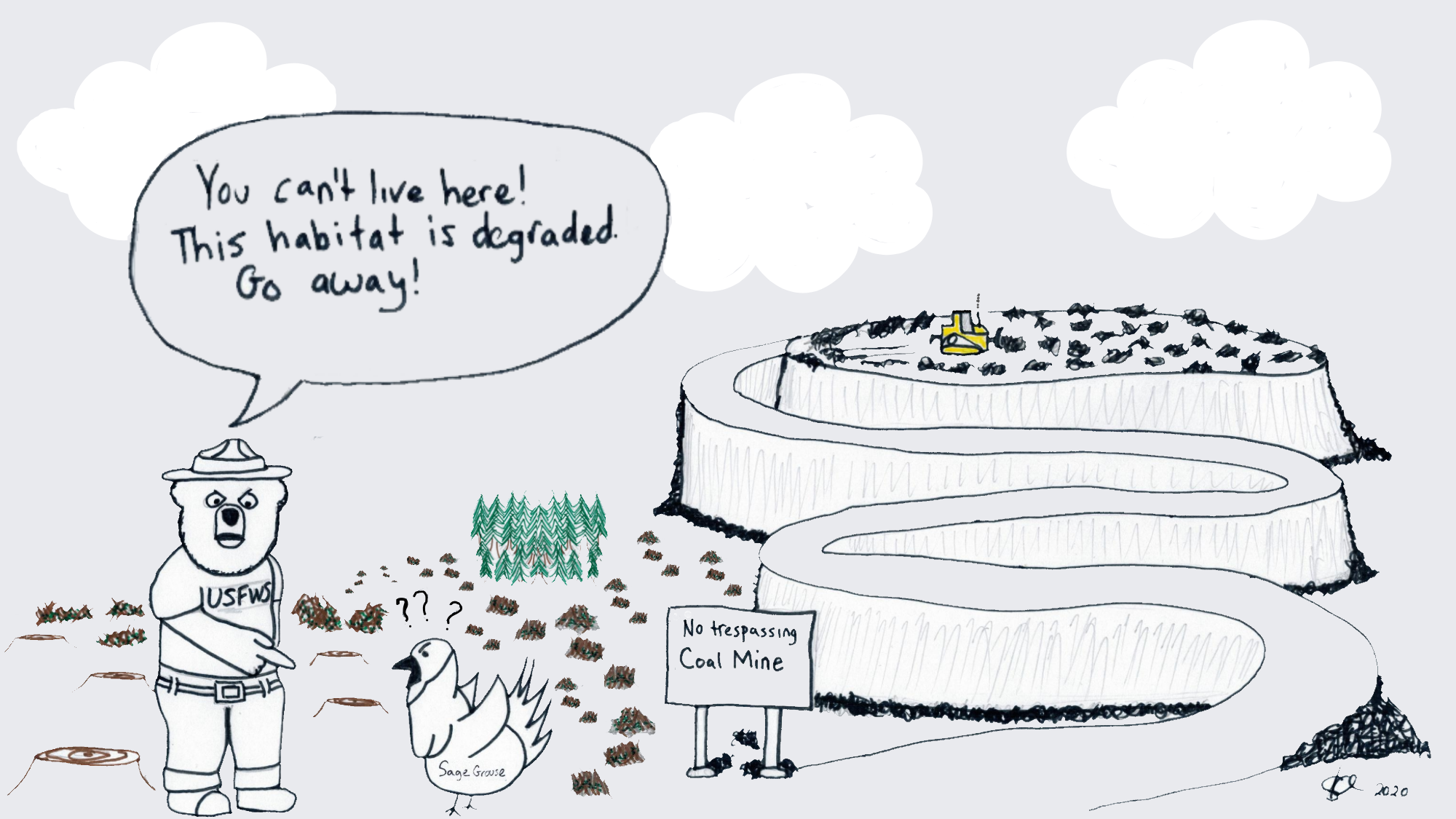
According to the USFWSStrix occidentalis caurina, the owl faces the threats of habitat degradation, changing “weather patterns,” and competition from the invasive barred owl (Strix varia) and requires old-growth forests that have dead trees, fallen logs, and a canopy that is between 150 and 200 years old. Recent news has also revealed the northern spotted owl has suffered greatly from the dispersion of anticoagulant rat poison into its environment by the agricultural and illegal marijuana industries. The bird’s population has declined between 1.2 and 8.4 percent per year depending on location. The USFWS has even admitted the owl warrants listing as endangered under the ESA, but the agency says it is precluded from doing so because it has other, higher priority species to worry about.
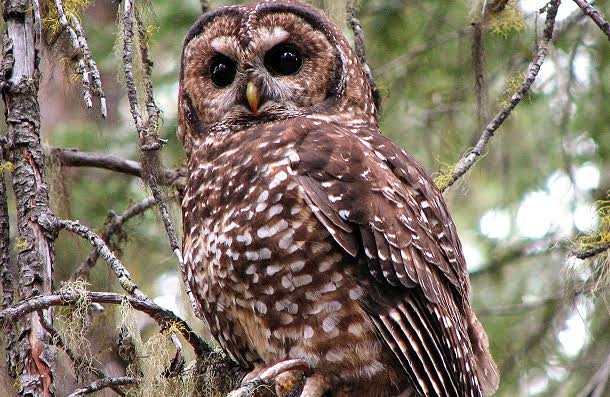
“Even in its final week, the Trump Administration is continuing its cruel, reckless attacks on wildlife at a breakneck pace,” said Greenwald in a press release. “This revision guts protected habitat for the northern spotted owl by more than a third. It’s Trump’s latest parting gift to the timber industry and another blow to a species that needs all the protections it can get to fully recover.”
Gray Wolves Delisted
On Jan. 4, 2021, the Trump Administration’s decision to strip gray wolves (Canis lupus) of their ESA protections went into effect. The removal of the species leaves its conservation to the states; some have already enacted hunting seasons on the wild canine, while allowing trapping as well. In a press release, Samantha Bruegger, Wildlife Coexistence Campaigner for WildEarth Guardians, laid out what this means for the wolves:
Tragically, we know how this will play out when states ‘manage’ wolves, as we have seen in the northern Rocky Mountain region in which they were previously delisted. In Idaho, nearly 600 wolves were brutally killed in a one-year span from 2019-2020, including dozens of wolf pups. Last year in Washington, the state slaughtered an entire pack of wolves due to supposed conflicts with ranching interests. Without federal protections, wolves are vulnerable to the whims and politics of state management.
Conservationists aren’t taking the decision lightly. Two separate lawsuits from 17 organizations have been filed against the Trump Administration for delisting the apex predator.
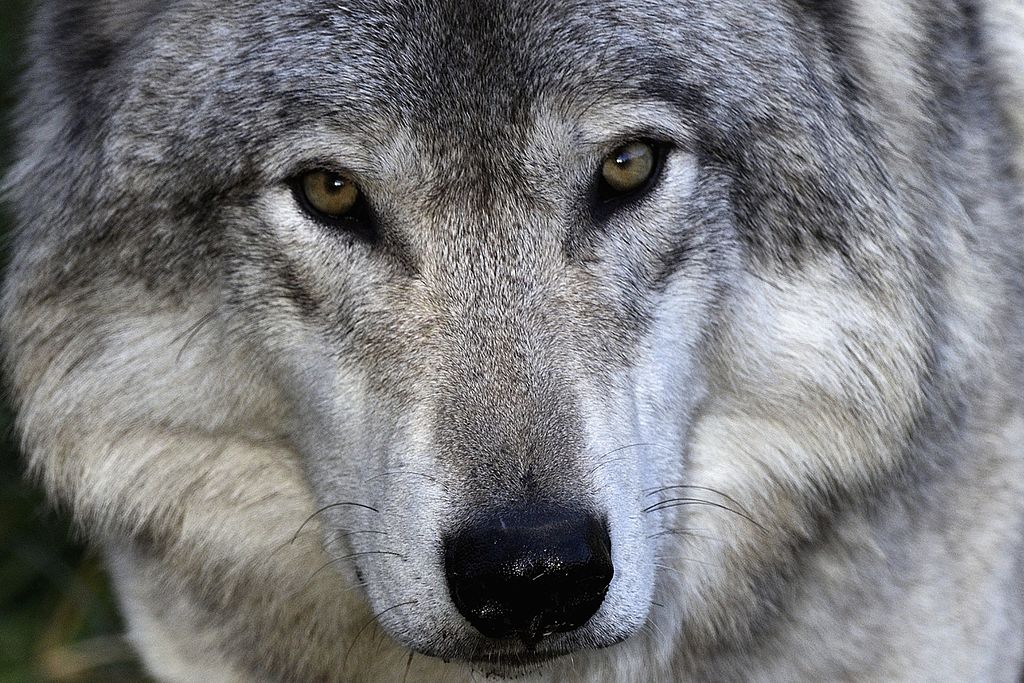
Migratory Birds Protections Shot Down
On Jan. 7, 2021, the USFWS significantly weakened the Migratory Bird Treaty Act (MBTA) of 1918 when it passed a final rule stating the MBTA’s “prohibitions on pursuing, hunting, taking, capturing, killing, or attempting to do the same, apply only to actions directed at migratory birds, their nests, or their eggs.” If something happens to birds incidental to an activity, the business or person involved in the incident is not responsible and cannot be charged under the MBTA with this rule, which goes into effect on Feb. 8, 2021. Not everyone in the government agrees with the new rule.
“This is the wrong direction. This is a mistake that’s being made at the federal level,” Vermont Fish and Wildlife Commissioner Louis Porter told WCAX. “The Migratory Bird Treaty Act has been successful as one part of a larger strategy to protect and restore these bird species.”
Opponents of the new rule argue that stricter enforcement of liability through the MBTA required industries to mitigate their harmful effects vis-a-vis migratory birds. Now, those industries will have no reason to do the right thing and will, in most instances, cut costs and continue to work without regard for avian life.
‘Warranted but Precluded’ Species
Monarch butterflies (Danaus plexippus) made the news on Dec. 15, 2020 when the USFWS said the species deserved protection under the ESA, but that it was precluded from those protections because 161 other species were more important. USFWS Director Aurelia Skipwith said in a press release:
We conducted an intensive, thorough review using a rigorous, transparent science-based process and found that the monarch meets listing criteria under the Endangered Species Act. However, before we can propose listing, we must focus resources on our higher-priority listing actions. While this work goes on, we are committed to our ongoing efforts with partners to conserve the monarch and its habitat at the local, regional and national levels. Our conservation goal is to improve monarch populations, and we encourage everyone to join the effort.
The USFWS noted that the western population of monarchs in California was down to about 30,000 individual butterflies in 2019. The “warranted but precluded” finding is allowable under the ESA when the agency doesn’t have enough resources to complete the listing process.
Monarch Butterflies weren’t the only species to be left off the list for higher priority resource expenditures. On Jan. 5, 2021, the Center filed its intent to sue outgoing Interior Secretary David Bernhardt on behalf of 11 species that were given the “candidate” designation under the “warranted but precluded” provision of the ESA. These species include: the eastern gopher tortoise (Gopherus polyphemus), the Peñasco least chipmunk (Tamias minimus atristriatus), the longfin smelt (Spirinchus thaleichthys), the Colorado Delta clam (Mulinia coloradoensis), three Texas mussels, the magnificent ramshorn snail (Planorbella magnifica), the bracted twistflower (Streptanthus bracteatus), the northern spotted owl (Strix occidentalis caurina), and the monarch butterfly.

“The Trump Administration’s undermining of the [ESA] puts the monarch butterfly, eastern gopher tortoise and hundreds more plants and animals at risk of extinction,” Greenwald iterated in a press release. “For newly nominated Interior Secretary Deb Haaland to successfully save these species from extinction, it will require more money for endangered species, new leadership at the Fish and Wildlife Service, and a renewed commitment to science and following the law.”
Bipartisan Agreement
It’s not just environmentalists, conservationists and liberals, who think this administration has been a disaster for the environment, its animals, and its plants.
“It’s pretty much been an unequivocal disaster,” Christine Todd Whitman, the former Republican Governor of New Jersey who was EPA Administrator under President George W. Bush, told CNN Newsource. “To just roll back [regulations] whole cloth because they came from a previous administration has made no sense, and really what’s happening is that they’re putting the health of Americans and the health of our environment in jeopardy. The mission [of the EPA] is to protect human health and the environment — pretty simple and pretty straightforward. It seems to me they’ve totally ignored the mission.”
According to Michael Gerrard, the Director of the Sabin Center for Climate Change Law at Columbia Law School, there are reasons to be glad: Trump’s agenda could’ve been better implemented and much more damaging.
“They took industry’s wish-lists and translated them into agency orders or regulations. They were only partially successful because they were so sloppy in following the necessary procedures that they were often slapped down by the courts,” Gerrard told CNN Newsource.
Many environmentalists are holding out hope that President-elect Joe Biden will reverse the environmental policies of his predecessor. One hundred thirty-five NGOs implored Biden in a joint-letter to begin the arduous process of reclaiming the ESA in order to stop the “extinction crisis” — and they presented an outline showing how he can do so while bypassing Congress.
Due to climate change concerns, Biden has already expressed his intention to cancel the Keystone XL Pipeline (KXL) permit on his first day in office. This would prevent the project from crossing the border between the U.S. and Canada. He’s already getting pushback from Canada for his decision.
“We’ve had a clear and consistent position supporting this project for years,” Justin Trudeau told reporters. “Our government is making sure that Canada’s views are heard and considered by the incoming Administration at the highest levels.”
While many environmentalists are celebrating Biden’s commitment to shut down the controversial pipeline project, it is still unclear how much more Biden will be willing or able to do to return the USFWS, EPA, BLM, and other government organizations to their pre-Trump status or better.
RELATED FROM ENVIRONEWS
War on Wildlife: Trump Admin, GOP, Going Apeshit Ballistic Delisting Species, Denying Habitat, Killing the Endangered Species Act
(EnviroNews Nature) – In response to Donald Trump being elected president in 2016, environmental NGO Defenders of Wildlife (Defenders) launched the Center for Conservation Innovation (CCI) on March 30, 2017 in order to save 14,000 documents related to the Endangered Species Act (ESA). They had good reason to be…
1st Species Screwed by Trump’s ESA Rollbacks: Iconic N. Spotted Owl, Robbed of 3.4M Acres of Habitat in OR/WA/CA
(EnviroNews Oregon) – Toward the end of Donald Trump’s first (and last) term, his administration made a handful of monumental slashes to the Endangered Species Act, removing several fundamental underpinnings of the 50-year-old, overwhelmingly popular, bedrock legislation. As reported by EnviroNews, one of those rollbacks allowed economic concerns from…
During Insurrection, Trump Admin Auctioned ANWR for Oil Drilling; State of Alaska was Biggest Bidder
(EnviroNews Alaska) – While Trump supporters were staging an insurrection at the Capitol Building in Washington, D.C., the President’s Bureau of Land Management (BLM) was taking bids for land in the Arctic National Wildlife Refuge (ANWR), now open for oil and gas exploration. On Jan. 6, 2021, the BLM offered…
Trump Admin Defining the Word ‘Habitat’ in Sneaky New Effort to Trash Endangered Species Act
(EnviroNews DC News Bureau) – In what prominent conservation group WildEarth Guardians (Guardians) is calling “death by a thousand cuts,” the Trump Administration is at it again, with another proposed change that would weaken the overwhelmingly popular Endangered Species Act (ESA/the Act). This go-round features an attempt to…
Breaking: Trump Admin Just Stripped Gray Wolves of Endangered Species Act Protection Across Lower 48 States
(EnviroNews Nature) – Bloomington, Minnesota – In 1978, the gray wolf was listed as endangered under the Endangered Species Act (ESA) in every state in the contiguous U.S. except Minnesota, where it was listed as threatened. Since then, farmers, ranchers, Sen. John Barrasso (R-WY) and Administrations from Clinton…
Trump’s New Endangered Species Rule Will ‘Turn over the Critical Habitat Designation Process to Industry’
(EnviroNews DC News Bureau) – Washington D.C. – The Endangered Species Act (ESA/the Act), in its original form, required listing decisions to be made based on science and trade data without any other considerations given for any reason. But a Trump Administration rollback in 2017 and finalized on…
GOP Senators Trying to Strip Yellowstone Grizzly of Endangered Status While Killing Your Right to Sue
(EnviroNews Nature) – Washington D.C. – On Sep. 9, 2020, Senator John Barrasso (R-WY), Chair of the Senate Committee on Environment and Public Works (EPW), held a hearing called: Successful State Stewardship: A Legislative Hearing to Examine S.614, the Grizzly Bear State Management Act (GBSMA). S.614 was introduced to…
You’re Gone! Judge Gives Pendley the Boot as Public Lands Boss; NGOs Target Nat’l Parks ‘Acting’ Director
(EnviroNews Montana) – On Sep. 25, Chief Judge Brian Morris of the Montana District Court barred William Perry Pendley from serving as the head of the U.S. Bureau of Land Management (BLM). The lawsuit brought against Secretary of the Interior David Bernhardt is a win for Governor Steve Bullock…
Rusty Patched Ripoff: Trump Admin Says Bumblebee is Endangered, But Won’t Give it Any Habitat
(EnviroNews Nature) – Washington D.C. – Rusty patched bumblebees (Bombus affinis) buzz, they bumble, they vibrate, and they knock a helluva lot of pollen loose from the flowers they visit – more than honeybees to be sure. They can fly and work in colder temperatures too, making them…
Lions and Tigers and… Sage Grouse? Oh My! – The Granddaddy Endangered Species Battle of Them All
(EnviroNews Nature) – On World Wildlife Day, March 3, 2017, EnviroNews Nature released one of the largest and most expansive documentaries ever published on a wildlife species in peril – the greater sage grouse (Centrocercus urophasianus). The academic yet entertaining film spans a plethora of topics and includes…
It’s Done: Trump Signs HJR 69 into Law Allowing Slaughter of Alaskan Bear Cubs, Wolf Pups
(EnviroNews Alaska) – Washington D.C. – On April 3, 2017, President Donald Trump signed House Joint Resolution 69 (HJR 69) into law. The legislation rescinds the U.S. Fish and Wildlife Service’s (USFWS) 2016 Alaska National Wildlife Refuges Rule (Refuge Rule). The Refuge Rule was enacted to protect native…
Dems Introduce ‘PAW and FIN’ Bill to Kibosh Trump Admin Assaults on Endangered Species Act
(EnviroNews DC News Bureau) – Washington DC – Signed into law in 1973 by President Richard Nixon, the Endangered Species Act (ESA/the Act) is bar none, one of the most popular pieces of legislation in America. But that hasn’t stopped the Trump Administration from attempting to undermine and…
Defenders of Wildlife Stashes 14,000 Endangered Species Documents Before Trump Can Delete
(EnviroNews Nature) – Washington D.C. – Nearly 14,000 documents related to the Endangered Species Act (ESA) have been preserved and made available for improved conservation efforts under a new initiative launched March 30, 2017, by Defenders of Wildlife (Defenders). “The Endangered Species Act is the strongest conservation law…
Senate Hearing: Green Groups Say Committee Moving to Gut the Endangered Species Act
(EnviroNews Nature) – On May 10, 2017, Senator John Barrasso (R-WY), Chairman of the Senate Committee on Environment and Public Works (EPW), led a committee oversight hearing called, “Conservation, Consultation and Capacity: State Views on the Need to Modernize the Endangered Species Act.” Green groups decry Barrasso’s desire…
Idaho to Open Grizzly Hunting Season So Yokels Can Kill One Male Bear in Name of ‘Management’
(EnviroNews Idaho) – Boise, Idaho – On March 22, 2018, Idaho’s Fish and Game Commission voted unanimously to direct the Department of Fish and Game (IDFG) to collect comments on a proposed grizzly bear hunting season. Idaho would allow all hunters together to shoot a grand total of…
These Species Should Be ‘Endangered’ But Aren’t Due to Political Horse Trading, Report Reveals
(EnviroNews Colorado) – Special-interest politics – not sound science – decides the fate of species on the brink of extinction in the U.S., according to a new expose’ from the Endangered Species Coalition. The report, Suppressed: How Politics Drowned Out Science for Ten Endangered Species (Suppressed), profiles ten…
20 Western Governors Trying to Seize Power Over Endangered Species Act – Green Groups Say No Way
(EnviroNews DC News Bureau) – Whitefish, Montana – On June 28, 2017, the Western Governors’ Association (WGA) released its 2017 recommendations to alter the Endangered Species Act (ESA) after its annual meeting in Montana. The resolution arrived at calls for an increase in state power over ESA implementation…
After Joint Lawsuit, USFWS Backs down, Agrees to Consider Sonoran Desert Tortoise for ESA
(EnviroNews Arizona) – Tucson, Arizona – [EDITOR’S NOTE: Clarification: The headline on this story originally read, “After 5-yr. Legal Battle…” USFWS declined to list the species in 2015, and the joint-lawsuit was filed in Sept. 2019] In a reversal of its 2015 position, the U.S. Fish and Wildlife Service (USFWS)…
FILM AND ARTICLE CREDITS
- Shad Engkilterra - Journalist, Author
- Dakota Otero - Graphic Artist



